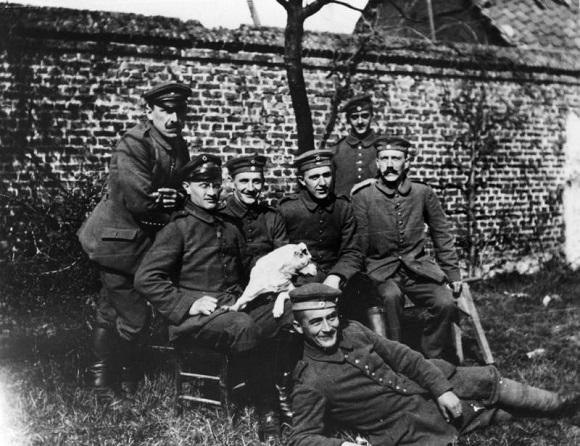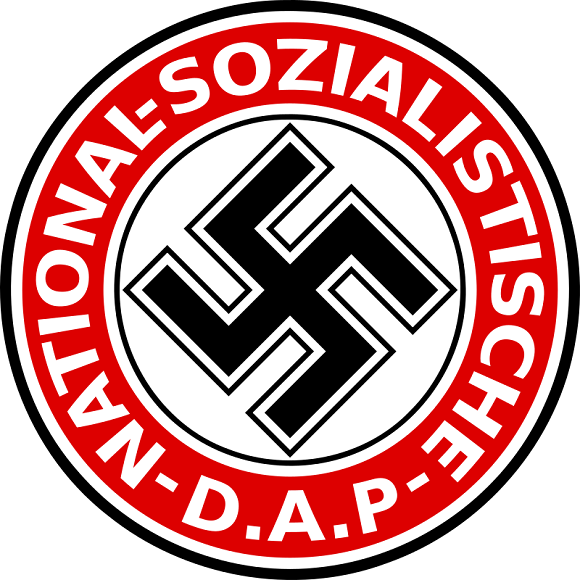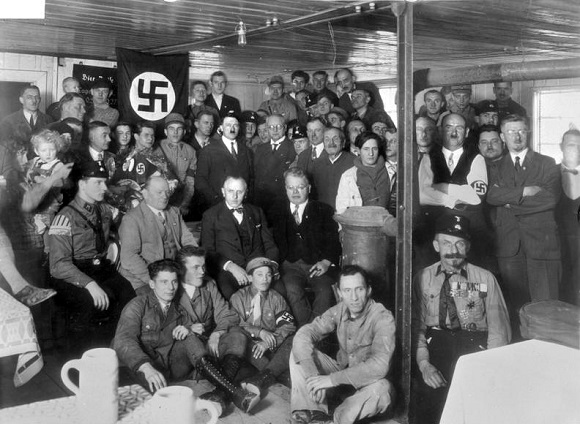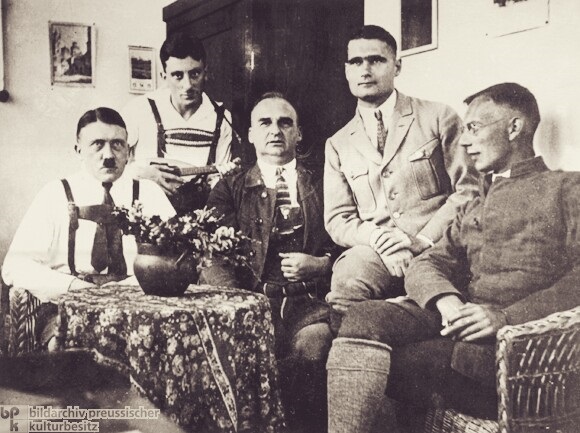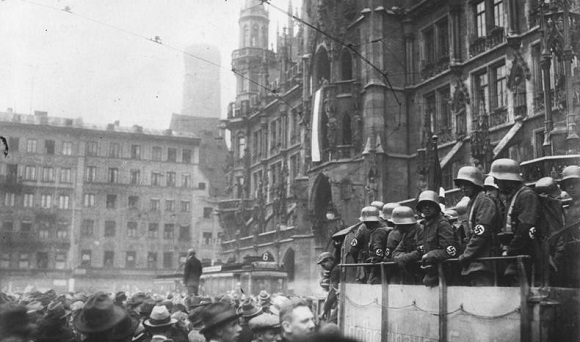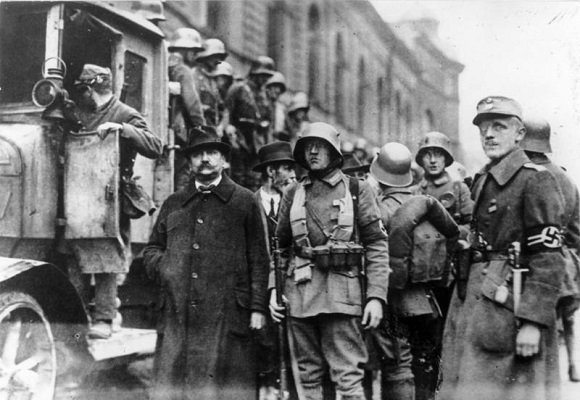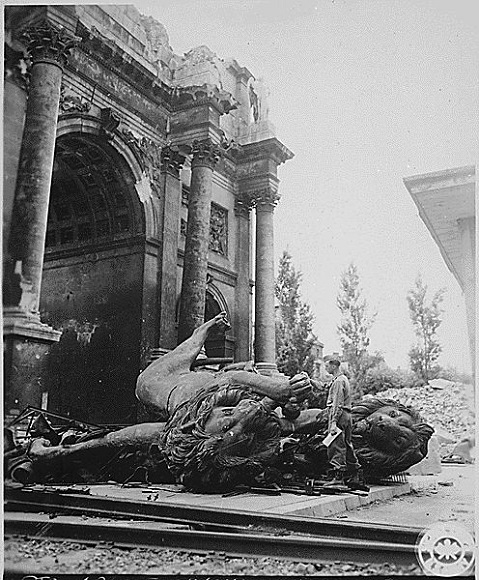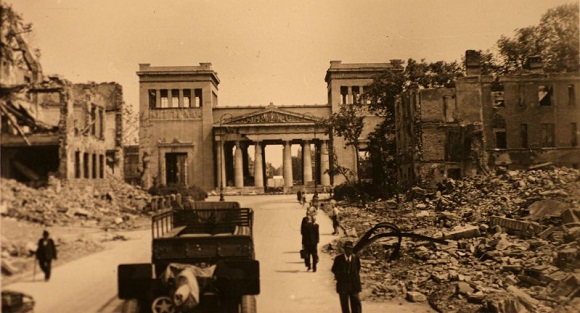Maturity
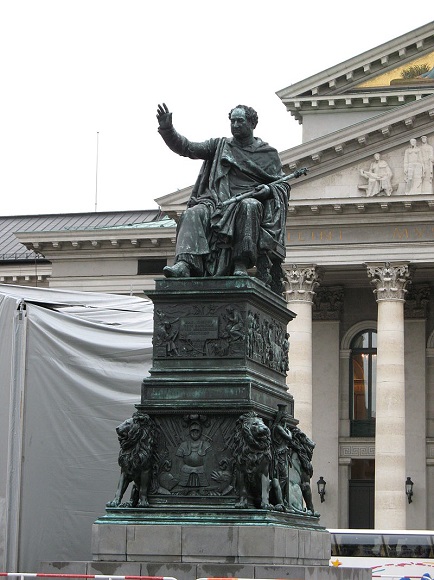
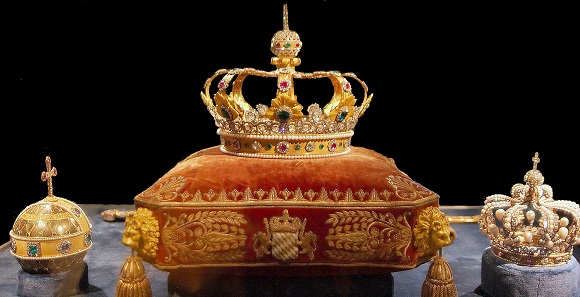
Bavaria emerged from the Napoleonic Wars as the largest German state in central Europe, having acquired new provinces and having been granted the status of a kingdom (1806). Centralization of the state administration in Munich brought new inhabitants and new functions to the growing city while the new design of its urban architecture embodied & enhanced the prestige of the entire kingdom. As a counterpart to bourgeois Marienplatz, the Residence became a focal point of the royal capital, with the creation of spacious open areas surrounding it, gradually evolving into today’s Max-Joseph Platz with the construction projects of the National Theatre on its eastern side, the Königsbau (kingly building) modeled after the Palazzo Pitti in Florence on its north (the jewels of the Wittelsbach dynasty are kept there today), the Corinthian colonnade on its south as well as the remodeling of the Palais an der Oper façade, all built before 1830.
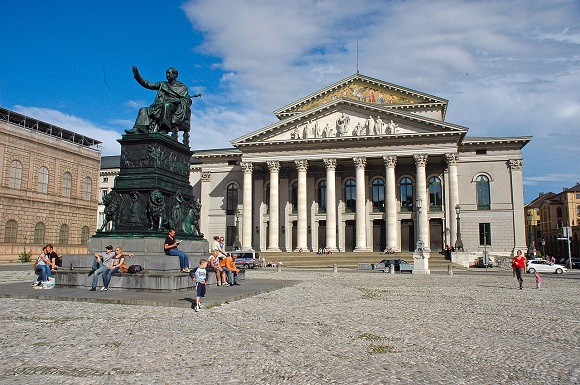
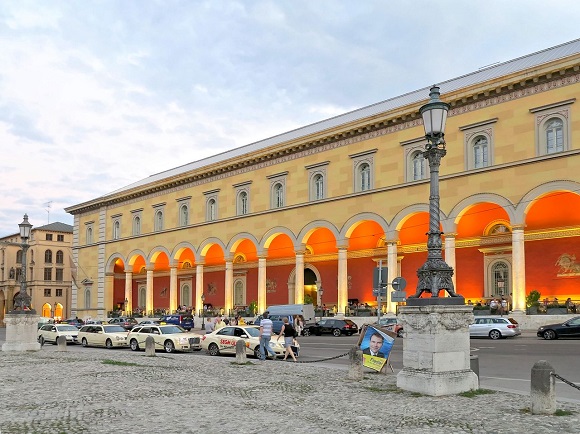
In 1821 Munich becomes the seat of the new archdiocese of Munich & Freising with Frauenkirche becoming the official Archbishop’s Cathedral while in 1826, following the orders of King Ludwig I, the University of Ingolstadt moves from Landshut (where it had been relocated in 1800) to Munich, bestowing the Bavarian capital with the status of a religious and intellectual capital as well as a political one. The University would be known as the Ludwig Maximilian University of Munich.
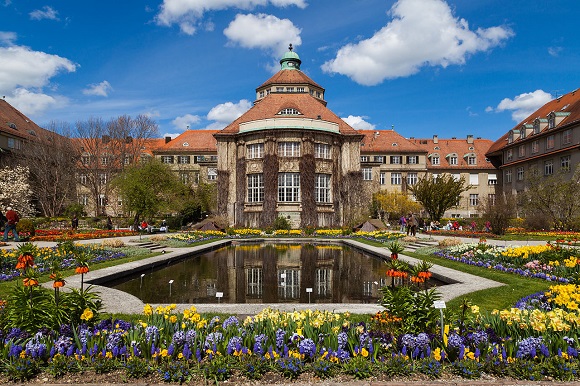
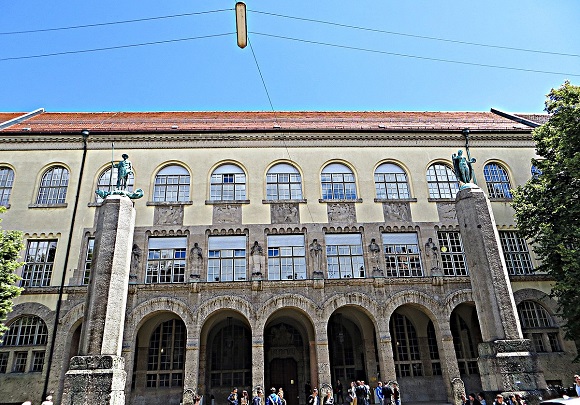
King Ludwig I’s (1825-1848) admiration of ancient Greece would instigate a wave of neo-classical architectural spree this time that would give Munich the nickname of “Athens of the North”. The Doric Temple-style Ruhmeshalle with its exquisite Bavaria Statue, the first of such proportion to be created entirely by cast bronze since antiquity, the Ludwigstrasse & Odeonplatz, Königsplatz with the Ionic Glyptothek, the Doric Propylaea & the Corinthian State Museum of Classical Art, the New Glyptothek, all reshaped the cityscape of Munich that was transformed into a neo-classical gem with an even more distinct identity.
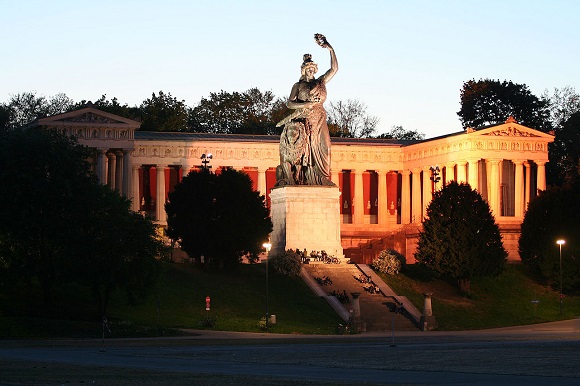
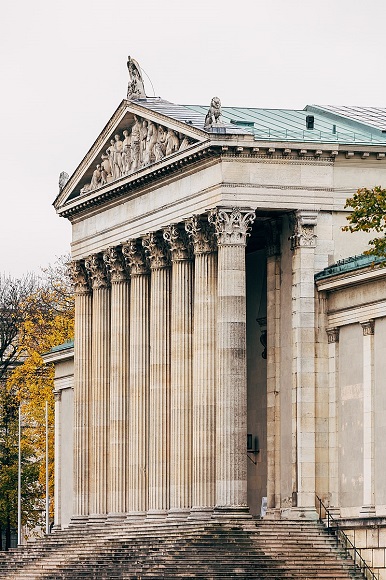
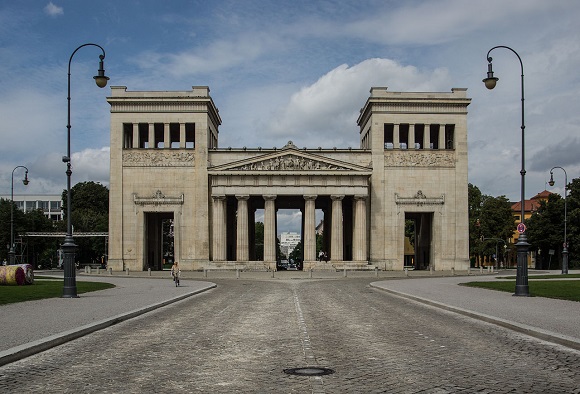
In 1835, the festival organized for the first time back on 17 October of 1810 on the expansive meadow in front of the city gates, as a sideshow of -still a Prince then- Ludwig I’s wedding, which initially included a children’s carnival, horse rides, games and a week of free beer, designated as a Volksfest (people’s festival), had already evolved into a national Bavarian festival known as Octoberfest that attracted more than 100.000 visitors who consumed more than 250.000 liters of beer.

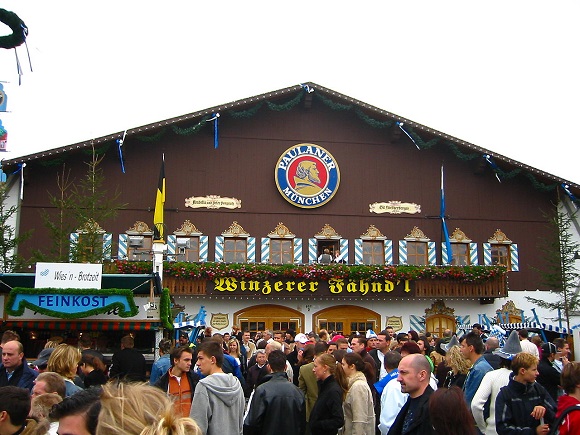
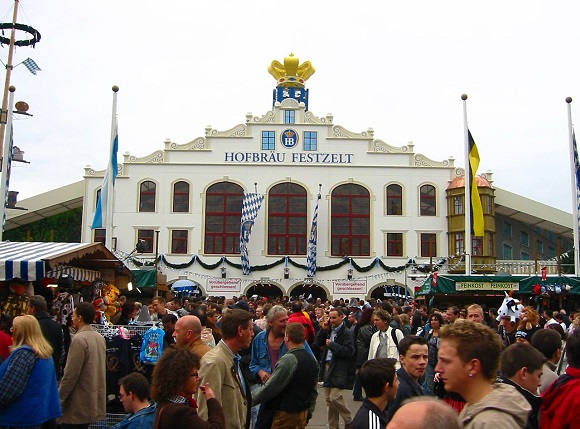
As the city approached the industrial age its population increased exponentially, reaching 100.000 in 1846 & 170.000 in 1871. The introduction of the railways in 1839 & King Maximilian II’s (r. 1848 – 1864) promotion of science, industry & literature, initiated a new bright era for Munich that reached its apogee during King Ludwig II‘s term (1864-1886).
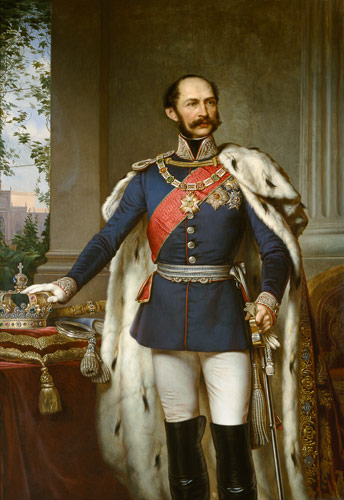
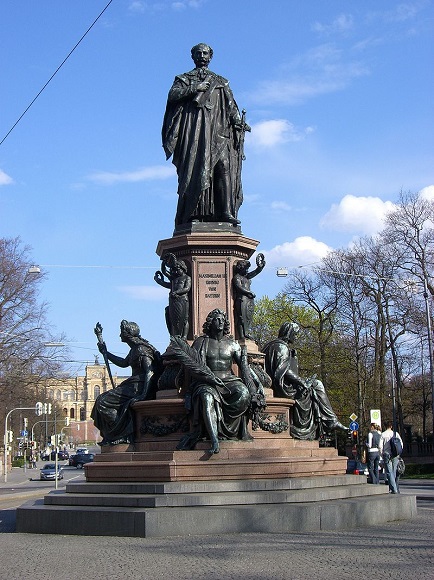
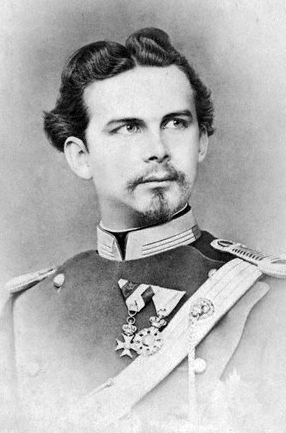
The Royal Avenue of Maximilianstrasse with the grandiose Maximilianeum (today housing the Bavarian parliament), the Museum Fünf Kontinente (Bavarian State Museum of Ethnology) & the Bavarian National Museum, the Gärtenplatz Theater, the city’s second Opera House & the Technical University of Munich, were all completed before 1875.
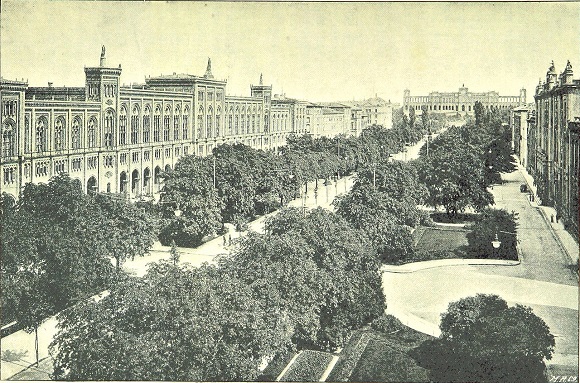
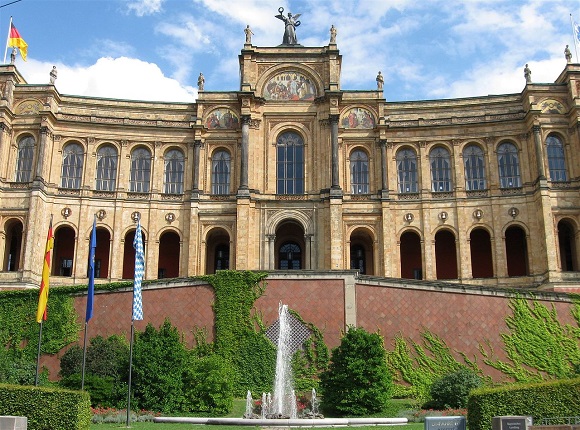
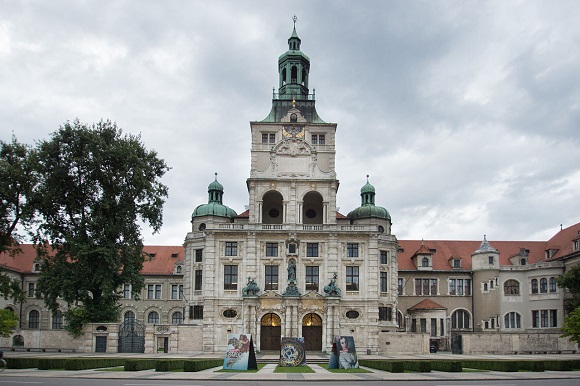
The kingdom of Bavaria was subjugated by Prussia in 1866 & then absorbed into the German Empire in 1871. Nevertheless, it experienced an extraordinary momentum of cultural growth with world-famous artists like the composer Richard Wagner making Munich their home base. The quarter of Schwabing around the turn of the century, became an artist’s quarter with a multitude of brilliant writers like Thomas Mann & painters like Wassily Kandinsky turning it into an iconic hub of the avant-garde & the bohemian.
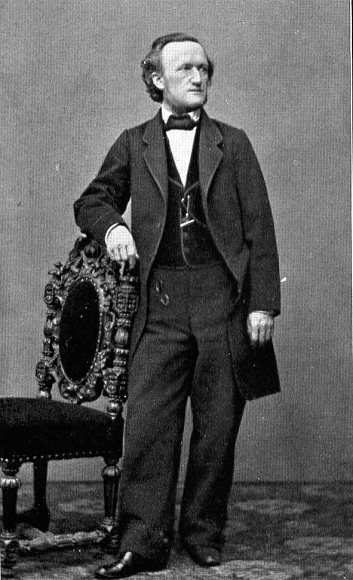
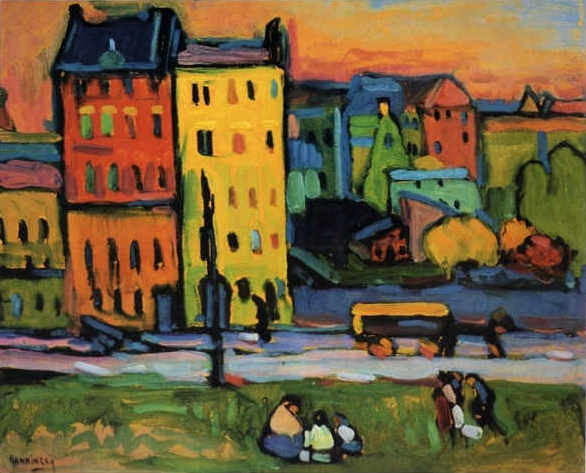

The first years of the 20th century could in no way predispose the residents of Munich for the tumultuous years lying ahead. The founding of the Deutsches Museum in 1903, the world’s largest museum of science & technology, emphasized the city’s new orientation towards the new industrial and scientific future. The Central Railway Station now had 22 tracks and handled 300 trains daily with thousands of passengers per day. The modern era had arrived.


Many bright minds such as Albert Einstein attended the city’s schools & others such as Rudolf Diesel (invented the diesel engine), Wilhelm Röntgen (detected & produced X-rays) & Alois Alzheimer (psychiatrist that first identified the mental disease named after him), lived & worked in Munich. Even Vladimir Lenin (still Vladimir Ilyich Ulyanov then) resided in Munich the first years of 20th century, where he published his famous “Iskra” newspaper & his most influential writing, the political pamphlet What Is to Be Done?, under the “Lenin” pseudonym in 1902.
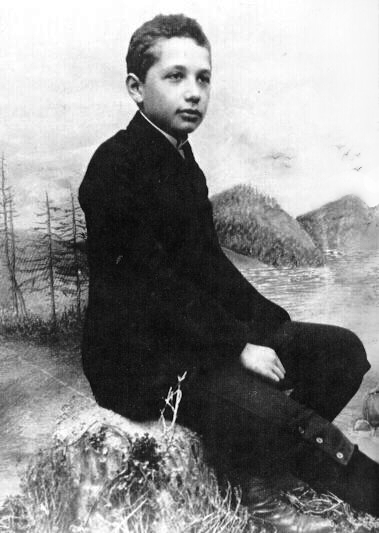
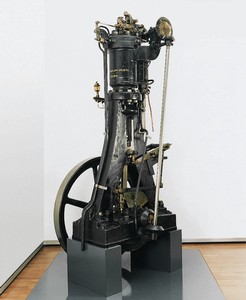
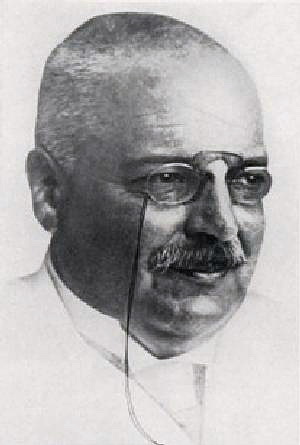
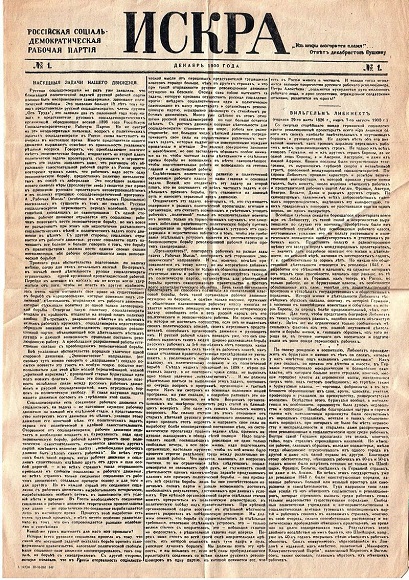
The havoc & destruction caused by WWI would produce social unrest in a manner that had never been experienced before in Munich, fueled even more by hunger and the division between left & right supporters. At the end of 1918 a march of 60.000 supporters of the Social Democratic Party ended at the gates of the Wittelsbach Residenz. It would mark the end of the longest ruling dynasty in Europe & the declaration of the Free State of Bavaria governed by the Revolutionary Workers Council in essence a Bavarian Soviet Republic (Räterepublik Baiern).
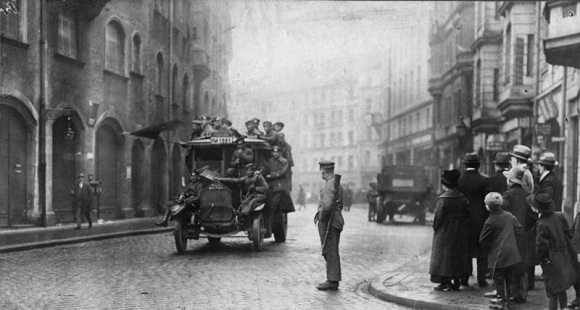
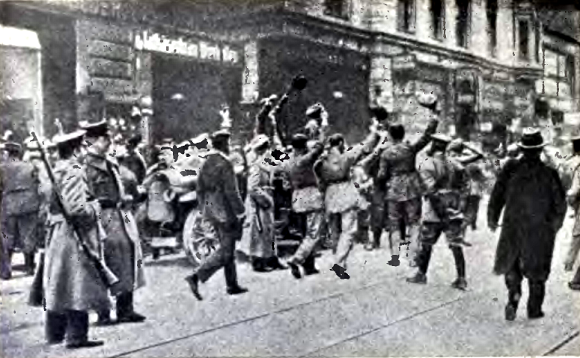
The soviet state would prove to be short-lived & its governance violently disrupted after the assassination of its leader Kurt Eisner in February of 1919 and a lost battle given against 30.000 men of the right-wing paramilitary group of Freikorps who were aided by 9.000 men of the German military sent by Berlin in May of that same year.
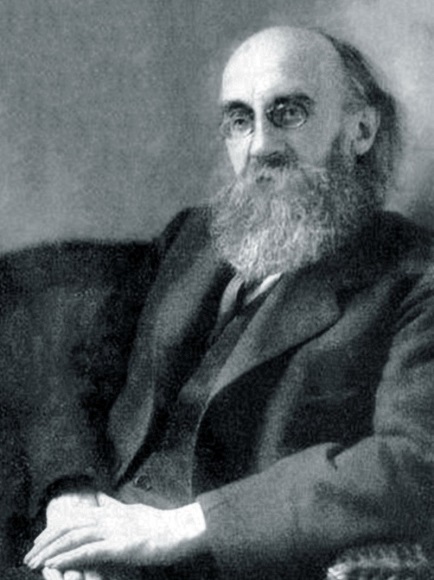
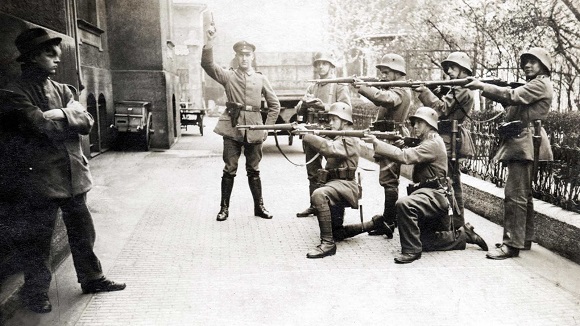
It was in this period, in this city that Adolf Hitler’s political career started to forge. Although born in Austria, Hitler had moved to Munich just before the outbreak of WWI where he joined the Bavarian Army, an experience that reinforced his German patriotism, that would be wounded by the capitulation of 1918 and shocked by the terms of the Treaty of Versailles that followed. Hitler, like many other German nationalists, believed that the “undefeated in the field” German army had been stabbed in the back on the home front by civilian leaders & Marxist politicians.
After the war Hitler returned to Munich. With no formal education or career prospects he remained in the army & in 1919 he became an intelligence agent with a mission to infiltrate a small & insignificant nationalist group, the Deutsche Arbeiterpartei (German Workers’ Party) founded in Munich a few months earlier. Being a nationalist himself, Hitler’s attraction to the group’s anti-Marxist & anti-Semitic, nationalist ideas didn’t take long to resonate. He became a member of the re-named Nationalsozialistische Deutsche Arbeiterpartei (National Socialist German Workers Party) in September of 1919 and in March of 1920 he started working full time for the NSDAP in Munich.
Almost immediately Hitler became the party’s leading public figure & speaker, attracting large audiences all around Munich. As Germany’s economic problems deepened & popular disdain for the Berlin-led policies of the Weimar Republic, skyrocketed in Bavaria in 1920, in 1921, Hitler’s fiery propagandist speeches bore fruits. With the support of more than 3500 Münchners, Hitler was granted absolute powers as chairman of the party in July of 1921. By November of 1923 he already felt strong enough to stage a coup against the Bavarian government that would nevertheless fail & lead to his imprisonment in Landsberg prison, 60 km west of Munich. It was there that Hitler dictated to his fellow prisoner and future right-hand man named Rudolf Hess, most of the first volume of Mein Kampf , a book that would be published a few months after his release, in 1925, selling more than 220.000 copies.
As a result of the failed coup also known as the Beer Hall Putsch (The coup had started from one of Munich’s largest beer halls, the Bürgerbräukeller /Putsch=coup ) the NSDAP party was banned in Bavaria. After his release, Hitler managed to persuade the Bavarian Prime Minister to lift the ban but he was still barred from public speaking until 1927.
Hitler’s ambition sphere was now growing outwards & his vision of power grab had to pass through the national elections. The Great Depression of 1929 would pave the way for his electoral triumph in 1933. In March 1933 the Nazis swept the city’s elections with Heinrich Himmler becoming the chief of police in Munich. A few days later the first concentration camp of WWII opened its gates at Dachau, 16 km northwest of Munich, for anyone who opposed the Nazi dominated city council.
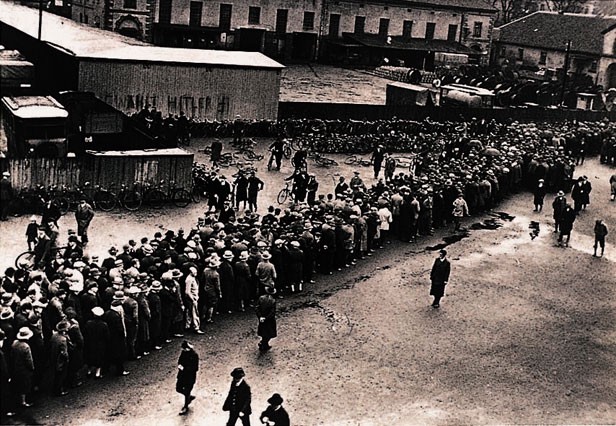

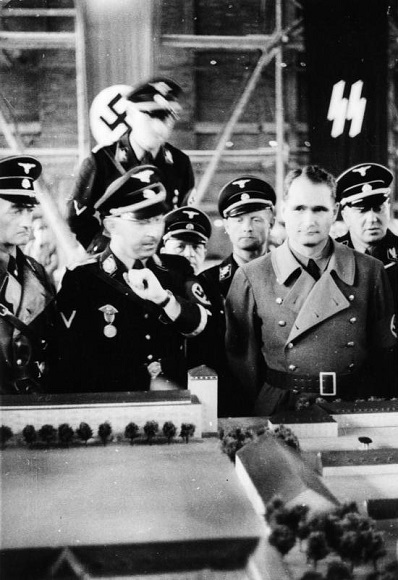
Hitler’s love for Munich did not vanish after his rise to power as he often referred to the city as the capital of our movement. It was in the party’s headquarters in Munich that the British Prime Minister Chamberlain & the rest European leaders signed the so-called Hitler appeasement pact known as the Munich Agreement which ceded the German-speaking part of Czechoslovakia to Germany on September 30th 1938. A month later in one of the biggest pogroms in history more than 30.000 Jews were arrested, more than 7.000 Jewish businesses & more than 1.000 synagogues destroyed throughout Germany in what became known as the Kristallnacht (crystal night or night of the broken glass).

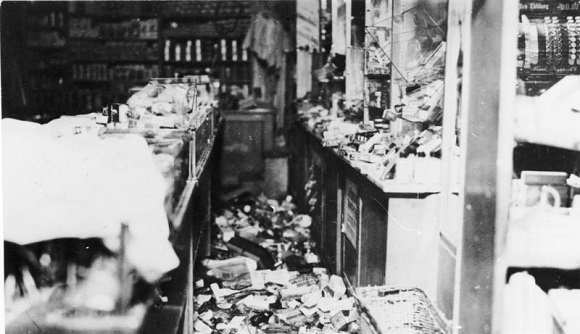
Although Munich wasn’t among the first cities to be hit by the allied bombings of WWII, in fact the nightmare of heavy bombardments was already raging for two years before Munich was hit, the final toll was too hard for Münchners to bear. More than half of the city’s architectural treasures were blown to pieces, over than 20.000 of its men lost in the battlefields & almost half (41% -337.000) of its civilian population had left the city.
After the war a careful restoration of the historic center & its landmark buildings was set in motion. The reconstruction followed the original patterns of the damaged buildings. Despite the enormous cost the project brought the city back from its ashes.
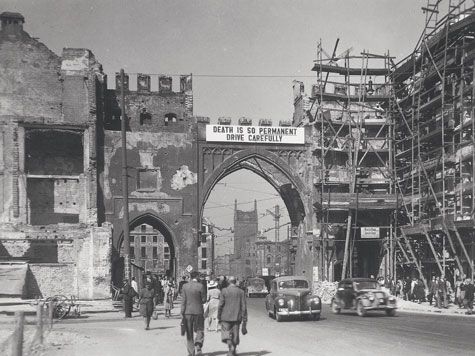
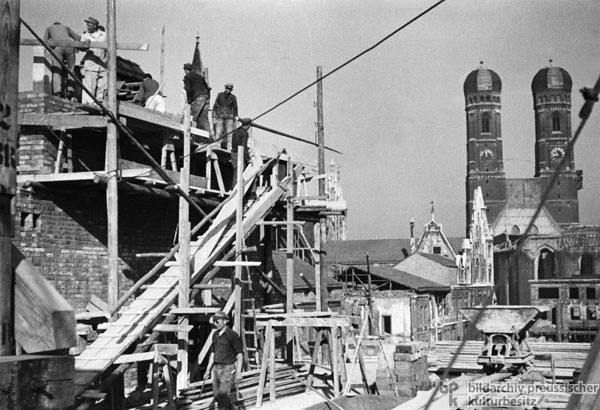
It didn’t take too long for Munich to stand back on its feet. The Bavarian capital quickly bounced back with the help of pre-existing companies that would become colossal in a few years like BMW (Bayerisches Motoren Werke), Siemens, & MAN SE that had their headquarters in Munich or companies like Allianz that were relocated to Munich right after the war.
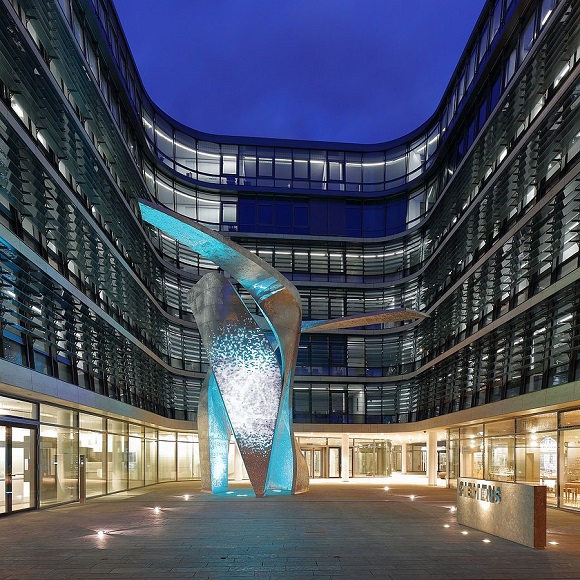
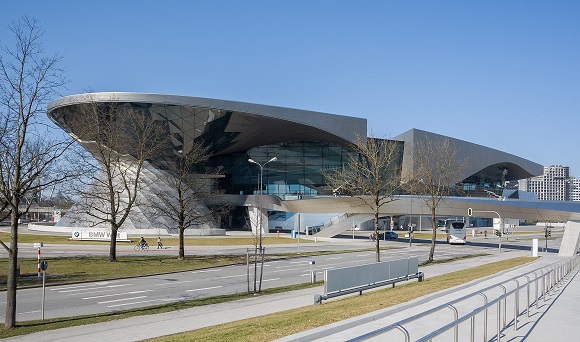
In 1957 the city’s population had already reached 1 million in an explosive rate of increase that would continue all through the 60’s & 70’s until it was finally stabilized in the 1980’s to about 1.300.000. The city’s growing importance in the German economy gave rise to its nickname Heimliche Hauptstadt (secret capital) in the decades after World War II, a trend that continued until present days with Munich ranking first among all other German cities in the financial indicators of 2014. Today Munich residents enjoy one of the highest qualities of life in the world, with low environmental pollution, one of the lowest crime rates in Germany and a thriving economy based in information technology, biotechnology, finance & tourism. For its high quality of life and safety the city is often referred to as Toy-town among the English-speaking residents. Müncheners call it Millionendorf , a word that translates into village of a million people. A modern “village” with a long, glorious history and a vibrant economy that makes its future seem brighter and more promising by the day.



